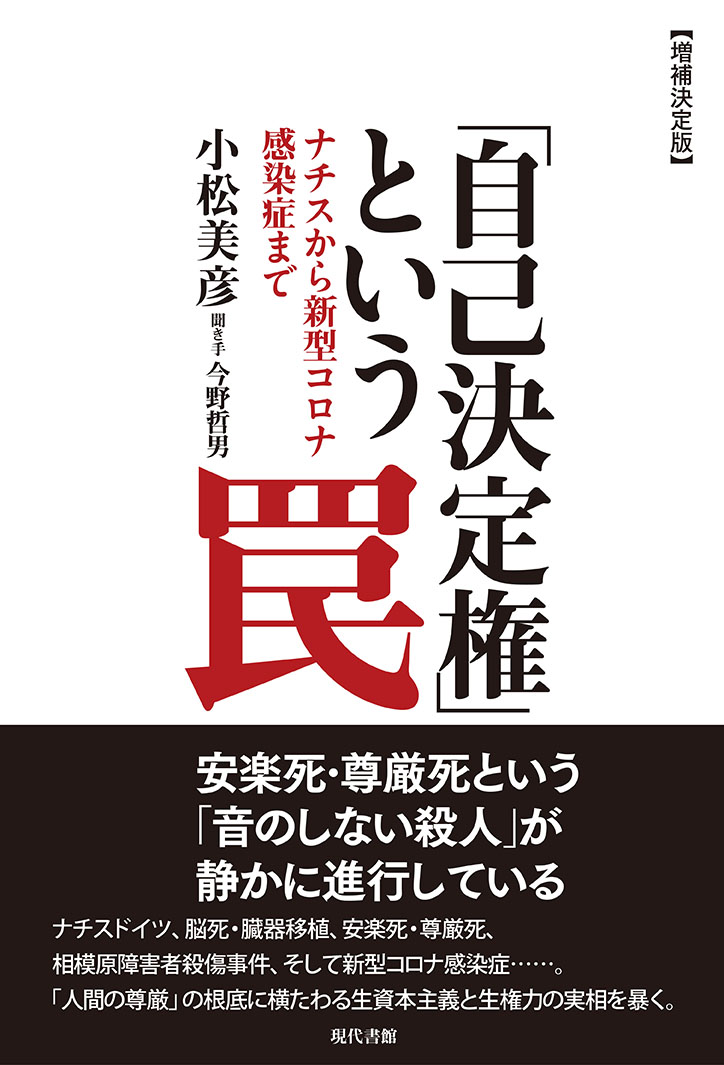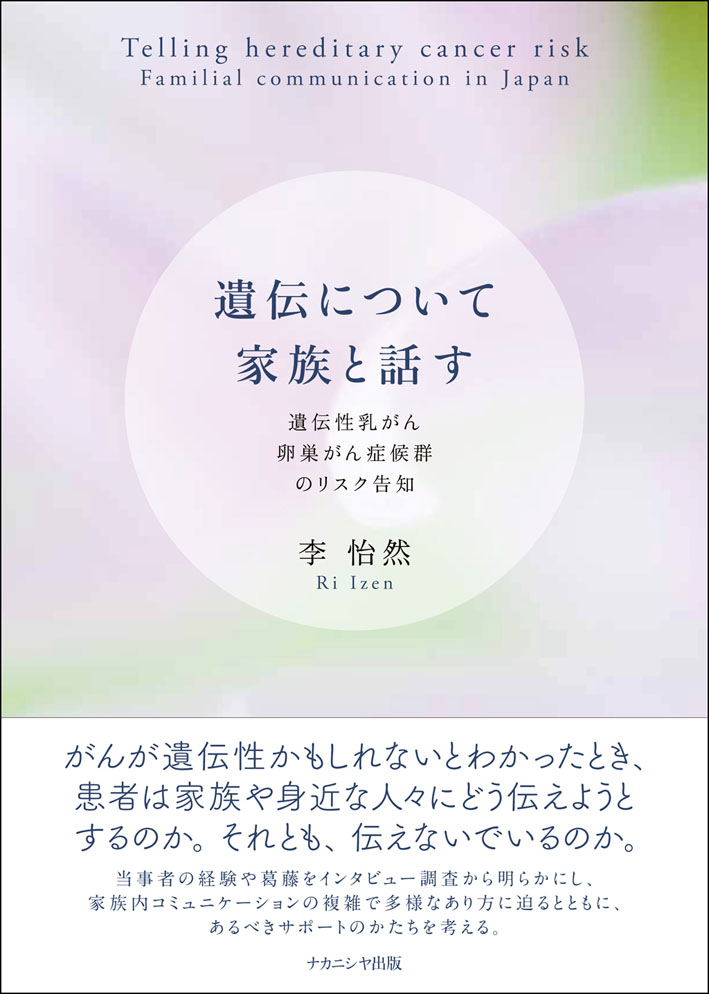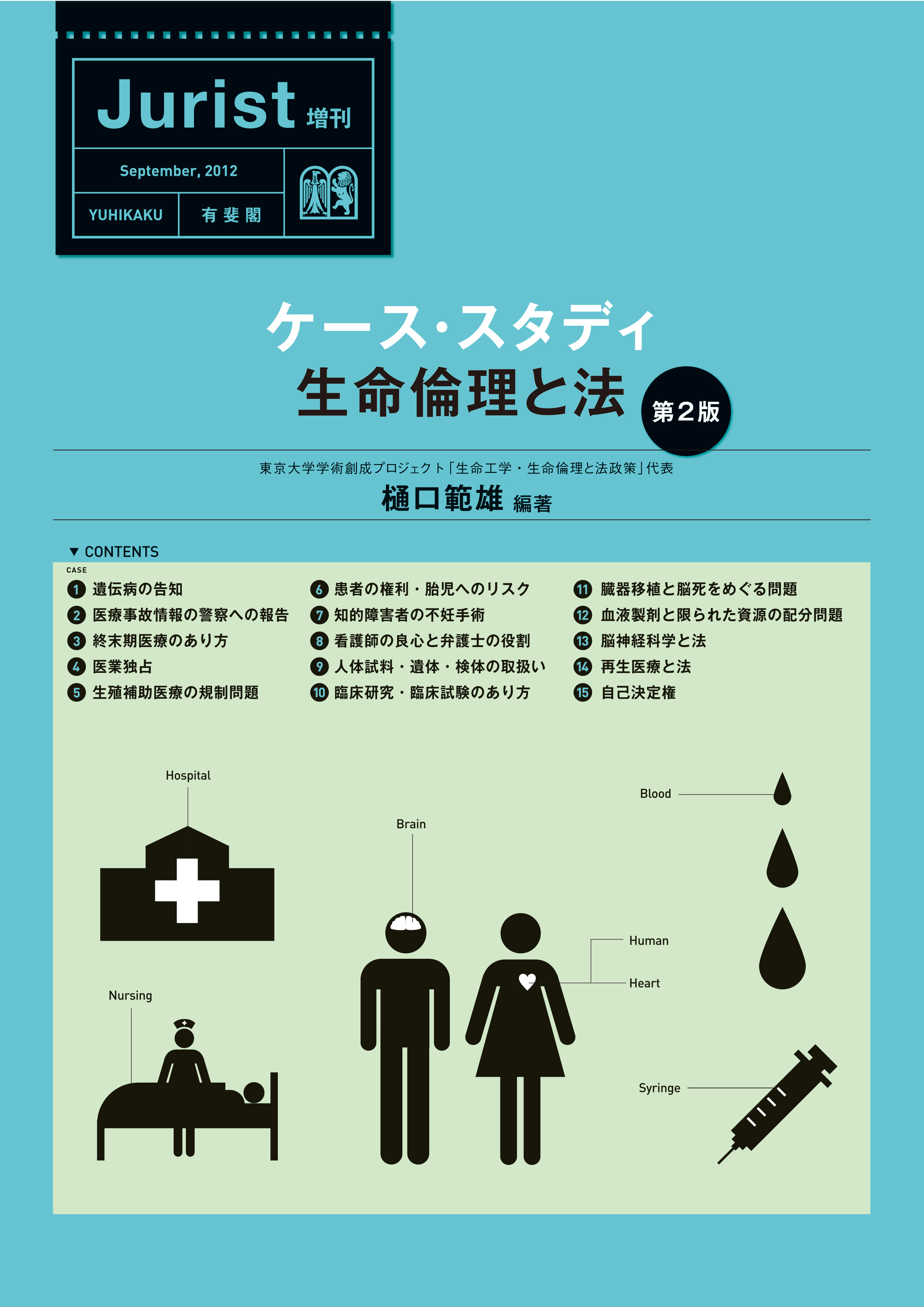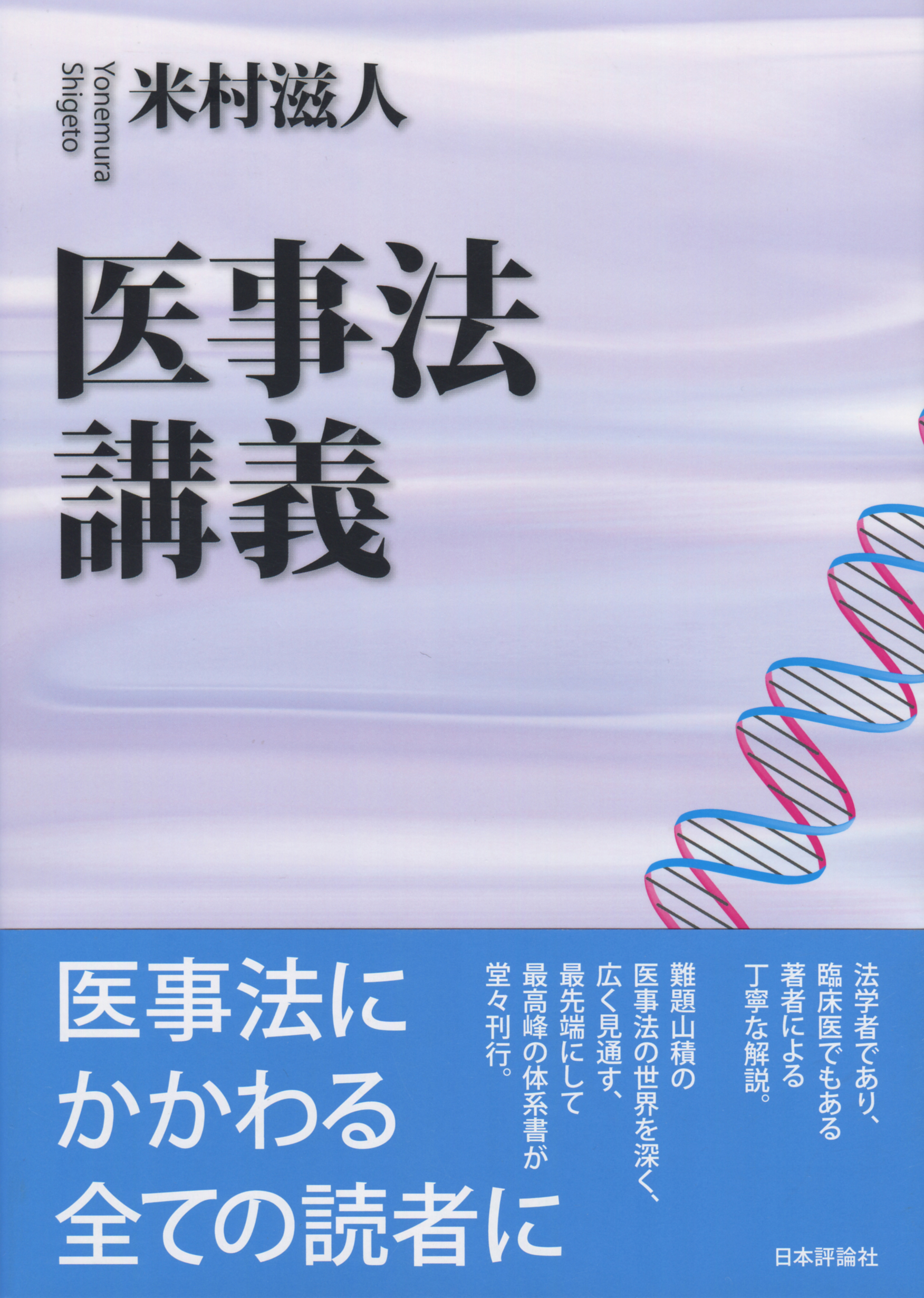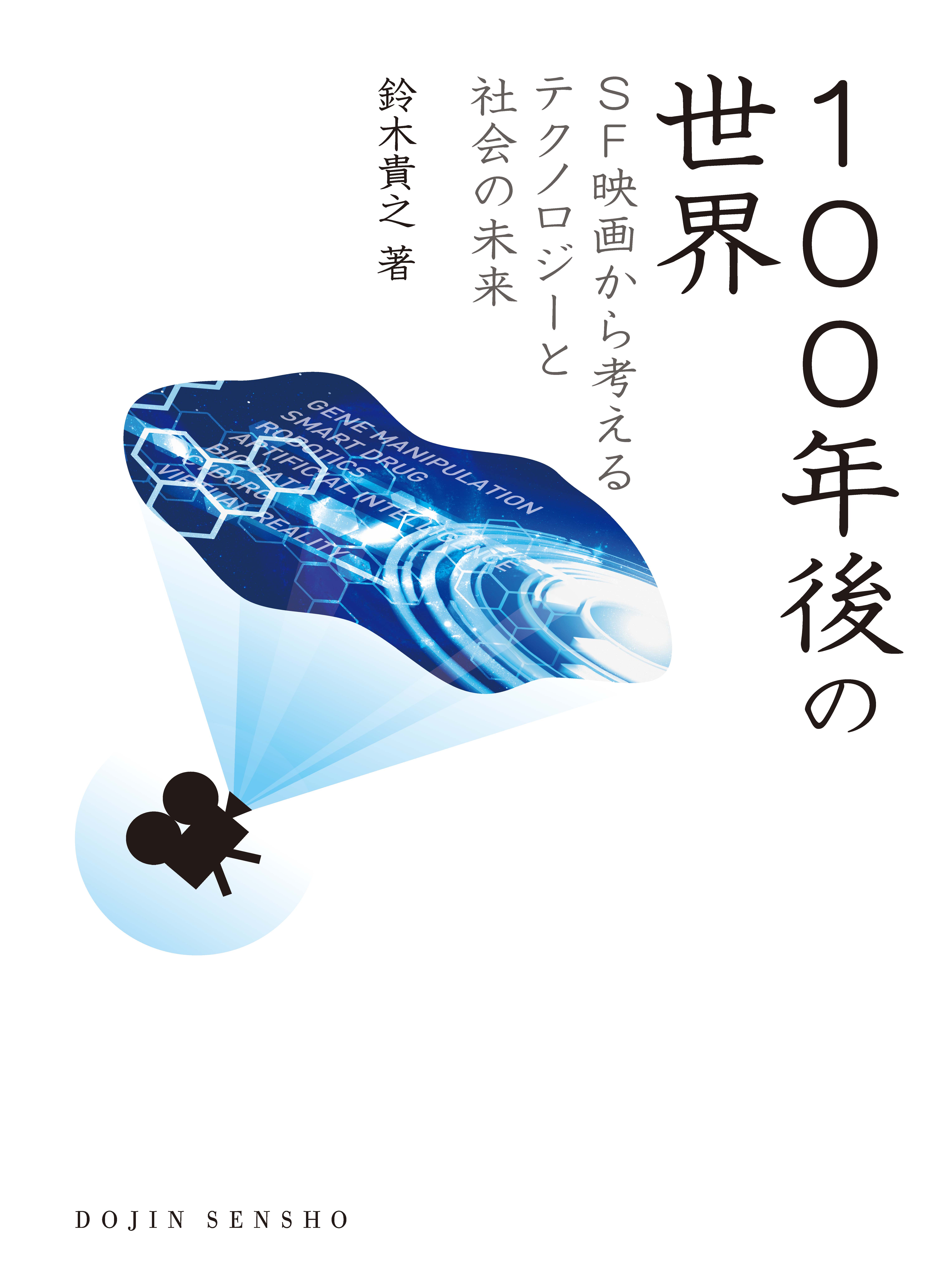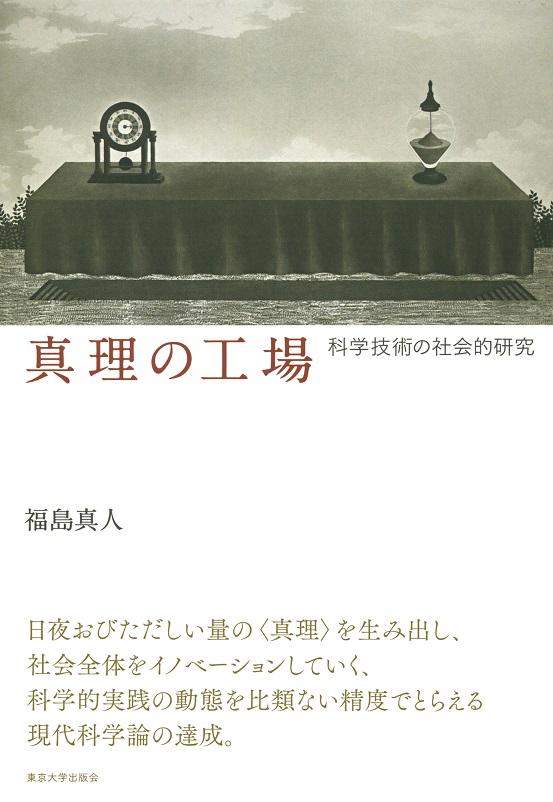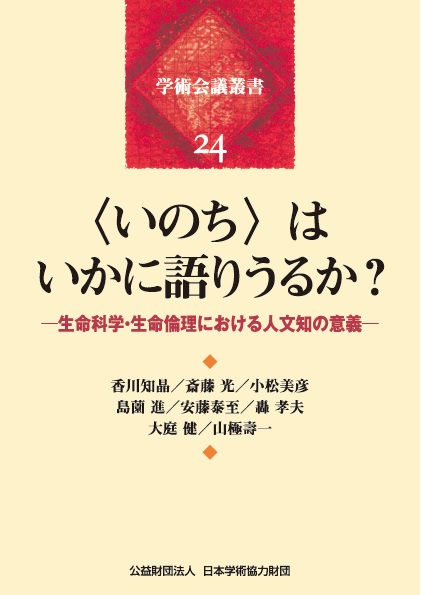
Title
Science Council of Japan Book Series 24 Inochi wa Ikani Katariuru ka (How Can We Understand “Life?”: The Significance of the Humanities for Life Sciences and Bioethics)
Size
271 pages
Language
Japanese
Released
March, 2018
ISBN
978-4990997205
Published by
Japan Science Support Foundation
Book Info
See Book Availability at Library
The last quarter of the 20th century was an era in which life sciences overtook physics as the cutting edge of natural science. This trend has become even more pronounced in this century and there seems to be no limit to the development of life sciences.
For instance, the Human Genome Project (HGP) was completed in 2003, having mapped the entire base sequence of human DNA. And today, research on personalized medicine tailored to individual patients based on the characteristics of their DNA is underway, building on the achievement of the project. Also, as everyone knows, a great deal of research has been undertaken on regenerative medicine using induced pluripotent stem (iPS) cells and clinical trials for patients with currently incurable eye diseases, cardiac decompensation, or Parkinson’s disease are beginning to take place. Furthermore, innovation in genome editing techniques has brought life sciences to a new stage where it is possible to change the blueprint for living things including humans to create a new “life.”
Against the backdrop of such remarkable developments, there is a widespread perception across society that natural science, such as life sciences, can explain everything about “life.” Worse still, there has also emerged a trend to belittle other approaches to understanding life, as if those other than by means of natural science were unnecessary. However, has natural science truly explained life itself? Is it not the case that we have come to believe, after learning a series of technical breakthroughs such as those cited above, that everything about life has been explained? Is it not the case that we mix up the technological manipulation and the scientific elucidation thereof to regard them as identical? If you have any doubt about these propositions, you should probably pay attention to the fact that what people expect natural science to do has shifted from researching nature or life itself to contributing to society.
In retrospect, natural and life sciences are not the only ones that have taken on challenges to understand life. Various forms of arts—such as literature, painting, music, and theatrical performance—as well as human and social sciences, have also been trying to elucidate the enigma of life from their respective perspectives that are different from those of natural and life sciences. These can be defined as an attempt to find out, not about “life” as an object of scientific research, but about “life” as we feel it deep inside in our everyday life. Today, however, the history and achievements of such endeavors are being overlooked and getting forgotten.
In this book, eight authors—who are all in all driven by the above-mentioned concerns—examine various problems concerning life by taking a multidimensional approach from a humanities perspective, while at the same time taking heed of the present state of natural and life sciences. More specifically, the book starts with retrospectively reviewing the status, problems, and limitations of understanding of life as achieved by natural and life sciences to define the idea of life in humanities in contrast thereto, and then moves on to examine ethical issues associated with the beginning and ending of life. Furthermore, through consideration of the fundamental nature of modern technology and the current orientation toward contributing to society, it explores what direction we should be heading in. Lastly, it points out that bioethics, a discipline that should be tackling the difficult problems discussed above, is subsumed by capitalism and avoids doing so, and calls for addressing such structural problems, i.e., the above phenomenon per se and factors behind it.
Of course, this book is not intended to provide a definitive solution or prescription to various problems surrounding life. However, reading through it would make people realize that the question of life cannot be fully explained by natural science alone and that human and social sciences are of great significance in that regard. In this sense, this is a unique book without a parallel in the world.
(Written by KOMATSU Yoshihiko, Professor, Graduate School of Humanities and Sociology / 2018)



 Find a book
Find a book


